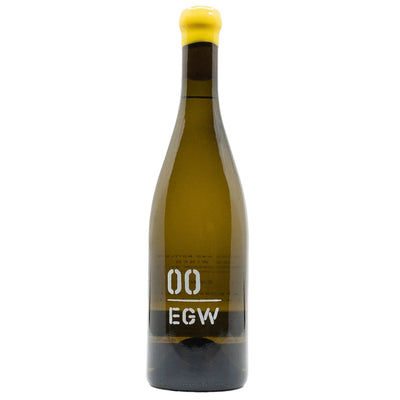David's visit to Tassi, Montalcino

On a recent trip to Italy, our Wine Buyer David Grant visited a dozen of our incredible producers. We'll be highlighting each over the next couple of months. First up: Tassi in Montalcino.
Over to David...
The Tassi story begins over a century ago. Guido Franci worked as a sharecropper for the famous Biondi Santi family in Montalcino, starting as a young boy in the early 1920s. He spent the next few decades learning various parts of land management, eventually becoming obsessed with beekeeping and starting a small family business in honey production.
The Mayor of Montalcino
A few generations later, Guido's grandson, Fabio Tassi, took reins of the family business, renovating the small honey shop and turning it into a specialist grocer that highlights the wine and produce of Tuscany. The empire continued to expand, with accommodation, restaurants, wine bars, and more – including, perhaps inevitably, a certified-organic vineyard.

In Montalcino, the Tassi name is highly respected. We were told several times that Fabio is the (unofficial) Mayor of Montalcino. When he opens a wine bar or a restaurant, it is not simply a showcase of his own wines – the whole region is showcased. In fact, my partner and I enjoyed a great afternoon whiling away the hours at the Enoteca la Fortezza, and it took some hours before we realised it was part of the Tassi group. They were just as excited to showcase other incredible producers from the region. I love this way of doing business.

The rebranding of Rosso
Montalcino is the most prestigious viticultural area in Tuscany, specialising in jaw-dropping Sangiovese that is most famously turned into Brunello di Montalcino. And while Tassi is renowned for its Brunello, I was blown away with their Rosso offerings.
This was across the board in Montalcino, and a theme I’ll keep repeating: Rosso is no longer just a declassified, not-good-enough-to-be-Brunello wine. It is its own thing, and there’s some outstanding Rossos out there. I’m loading up my personal cellar with Rossos, which I can’t wait to taste as they age.
A Rosso di Montalcino is aged for one year with no oak requirements, whereas a Brunello is aged for at least two years in oak (five for a Normale, six for a Riserva). This means they are much more affordable to make, and therefore buy!
This Rosso I tried at Tassi, pretty and informal, is all bold cherries and ripe blueberries. It is aged in bottle for 18 months (longer than required by law), and retains a succulence that is almost sweet. It's incredibly food friendly, and feels just as "right" at a summer BBQ as with a winter feast.

The wines of Tassi
A lovely light red for the summer table, the Consilium uses grapes from across the four vineyards, fermented with indigenous yeast in concrete tanks (below). An excellent standby for impromptu Tuesday night entertaining.
Tassi is experimenting with the use of clay, and their IGT wine, Bruno, is fermented and aged completely in amphorae (pictured above). A snappy and punchy wine with bright cherry and raspberry followed by some spiciness that feels adjacent to carbonic winemaking. Brunò reveals a shiny ruby colour and light touches of white pepper, cola and fresh rosemary sprig. Likewise, the wine is generous in floral tones of wild rose and pressed violet. No doubt, this is one of the most original and out-of-the-box wines to be made in the faithfully traditional Montalcino area.

The Rosso uses Sangiovese grapes from across the four vineyards, fermented in concrete tanks for 8-10 days, then moved to 50hl barrels for at least 12 months. Bold cherries and ripe blueberries give the wine a succulent and almost sweet personality. This wine is aged in bottle for 18 months. Given the Tassi family’s involvement in restaurants, it’s no wonder they’ve produced this great value and food-friendly Rosso.
Most of the Brunello is from Vigna Franci unless otherwise specified each year. The grapes are fermented in concrete for 15-20 days before spending 36 months in oak.
The 2018 is very lean and streamlined with easy fruit aromas of dried cherry and blackcurrant. The fruit is tart and bright but not too intense. Instead, the palate offers punchy flavours and nice energy. Dry tannins and a light consistency give this wine an immediate, near-term drinking window. Suckling gave it a 96.
Brunello di Montalcino Vigna Colombaio
The Brunello from the Vigna Colombaio parcel is macerated in oak for 20-25 days before moving into small barrels for 36 months. The resulting wine is fresh and bright. Production is only 3,600 bottles, and it received a 95 from Robert Parker.
Brunello di Montalcino Franci Riserva
“Perfection” is all I wrote in my tasting notes for this. With Sangiovese taken from the Franci parcel and aged in oak for an additional year, it’s no wonder Suckling awarded this 100/100.
A robust and powerful presentation with thicker layers of dark fruit, blackberry and tarry spice that are enhanced by cedar, mahogany and dustings of exotic clove or cumin. The intensity is still quite apparent, but the wine ultimately manages a more elegant and supple delivery, especially on the palate. Only 3,753 bottles were made.
We were also extremely lucky to try the ‘Filare 25’ 2019, an extremely limited edition Brunello from a single row (“filare” means “row” in Italian). It’s unlikely we’ll see this in Australia any time soon, so if you’re in Tuscany, seek it out!
Stay tuned for the next instalment of this series, with notes from David’s visit to Poggio al Tesoro.







Leave a comment